As winter slowly encroaches upon much of the U.S., let’s warm up a little by taking a Mexico City food tour.
We’ll start with two examples of comida callejera, or street food.

Green chorizo, what?! Nope, it’s not from using avocados.
Hailing from the city of Toluca in the state of Mexico (the latter of which surrounds Mexico City on three sides), chorizo verde consists of pork, and mix of herbs, spices, and chilies. Standard chorizo is the reddish one given a smokiness by the cayenne pepper (pimentón), so the green version is a nice change from the repetitive red chorizo flavor.
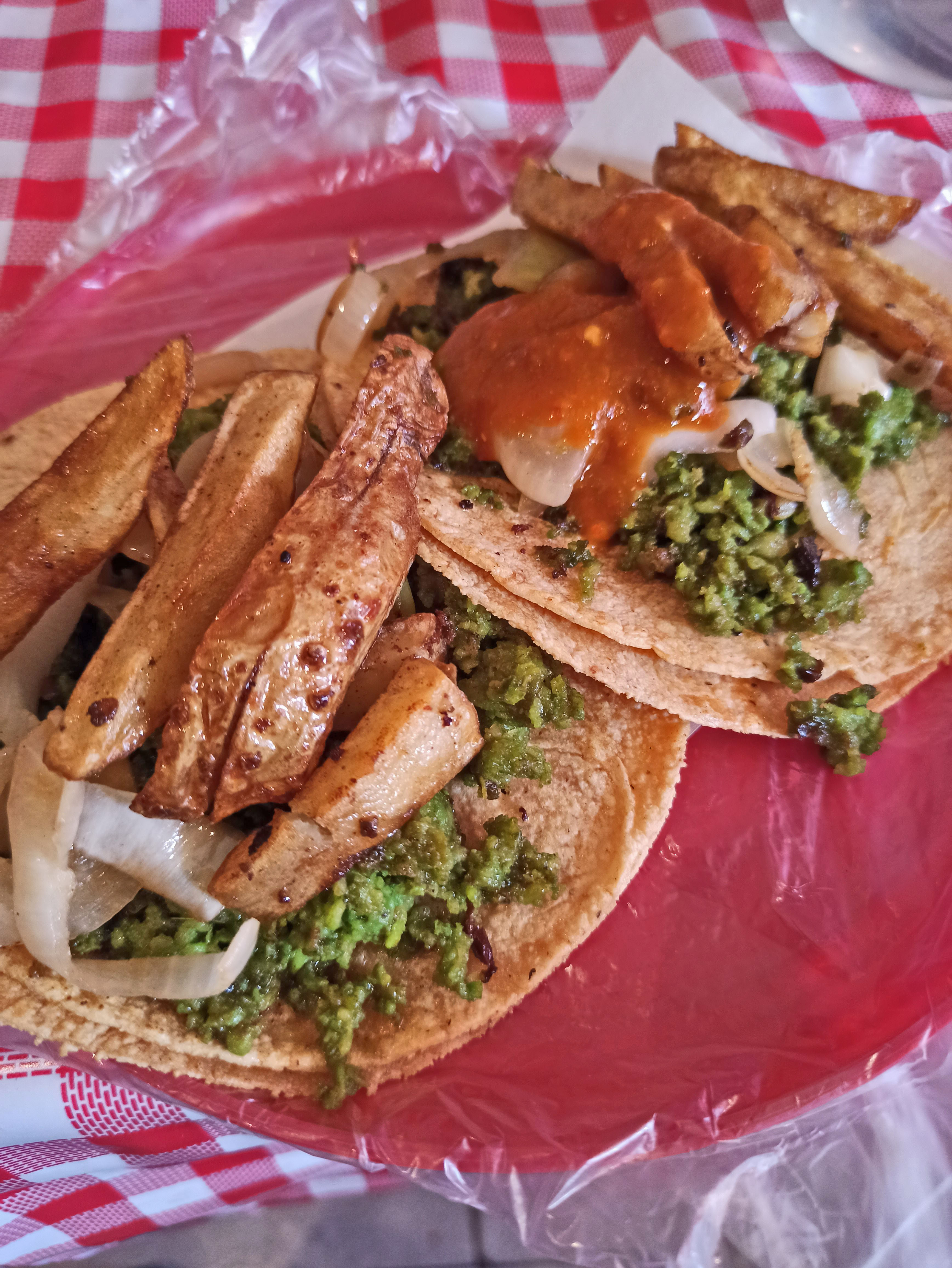
However, chorizo verde is not one of the more common street food options. That’s why you might want to keep a look out for it if you want an herbal, slightly lighter take on its Iberian cousin.
Having consumed just two tacos for the day, I was still feeling peckish. Besides, I had to continue with my Mexico City food tour.
Enter, one of the best food stalls I’ve seen anywhere, in the Colonia Juárez district.
It’s easy to get distracted by the deliciousness surrounding you in a place like Mexico, yet even in that lofty position, there exist stand-outs:
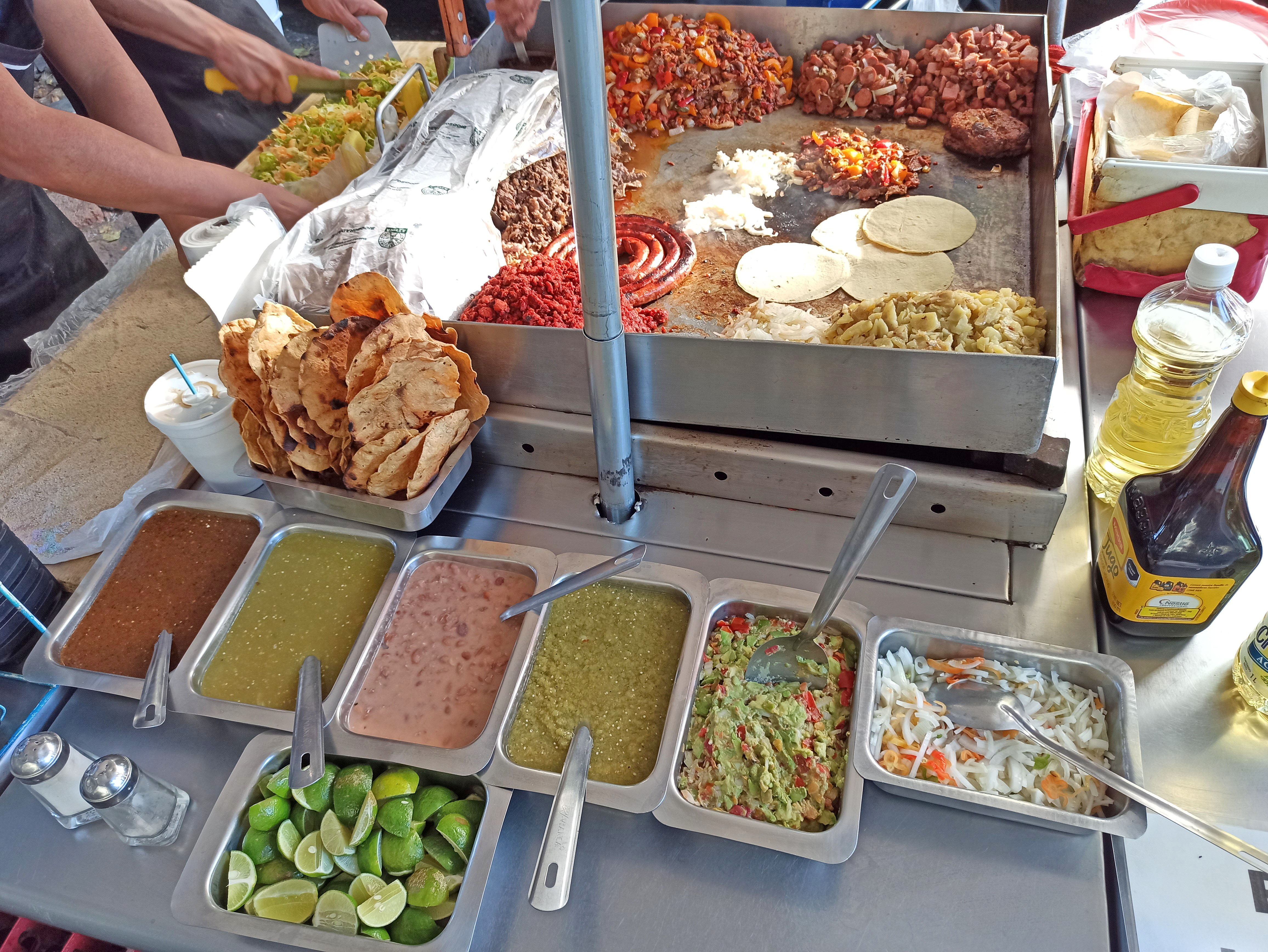
On the comal – a flat griddle (historically made of clay) used for centuries in Mexico -these three chefs had chorizo, campechano (a mix of beef and pork of various cuts), suadero (fried beef), carnitas (shredded pork shoulder braised in its own fat), something akin to a burger, papas (potatoes), and nopales, or cactus. What really sold me was the “fixins’ bar” of condiments– guajillo salsa, tomatillo salsa, beans, avocado tomatillo salsa, guacamole (!), pickled carrots, onions and cilantro, and a bevy of Veracruz limes. Wow.
What did I order?
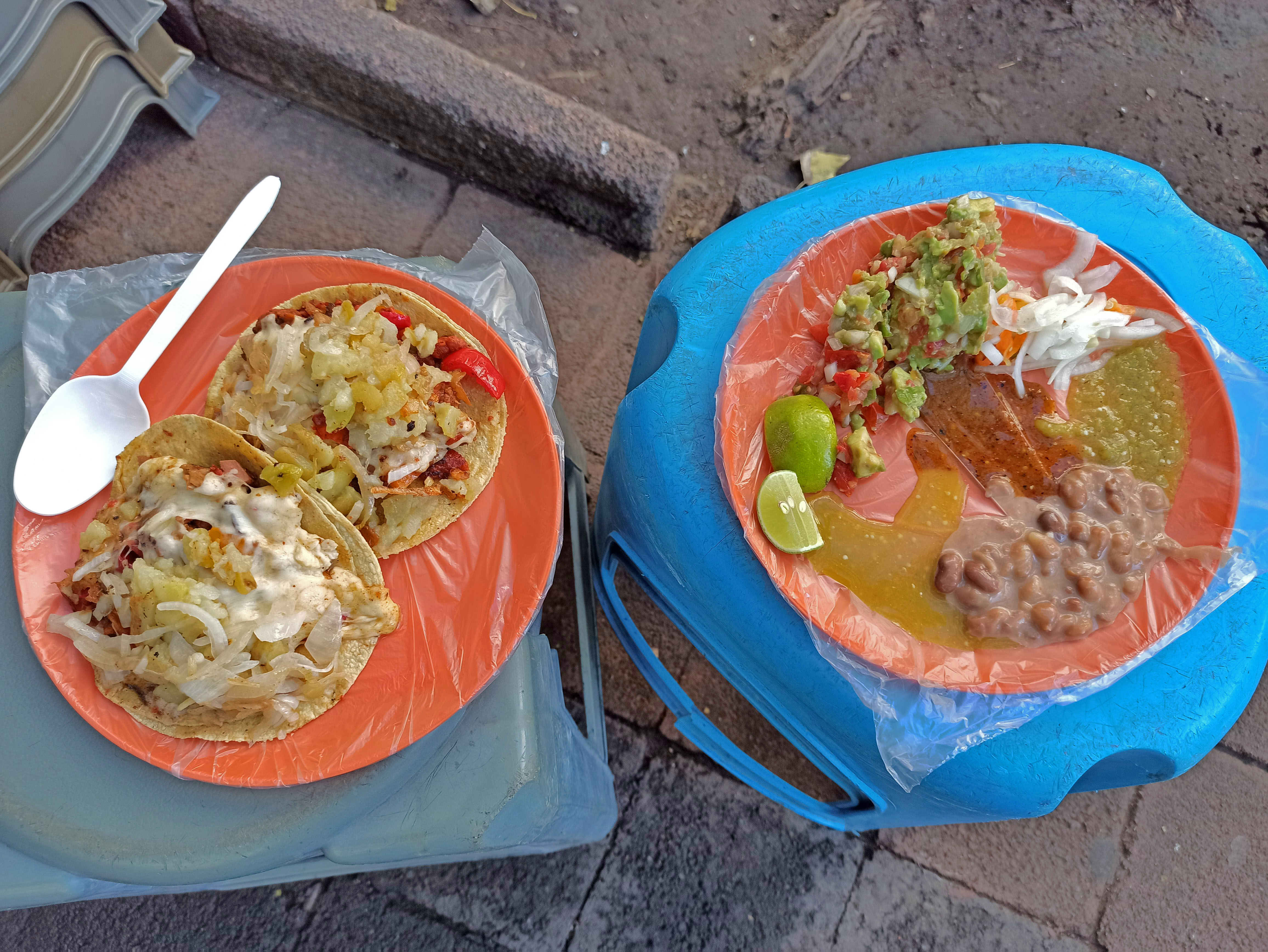
Two chorizo tacos with melted queso para asar (grilling cheese), potatoes, and onions, and a plate of the fun stuff. Naturally, by the time I was finished chowing everything down, I had two more plates of salsa, and three more tacos.
n.b. that queso para asar is delicious stuff, but I wonder where to get halloumi for my next Mexico City food tour?
Alright, it’s time for a drink break.

Nami, or ola in Spanish, means wave. It’s also the name of the first brand of nihonshu (what we call sake) produced on Mexican soil, in the city of Culiacán, Sinaloa. Although the brewery, called Sakecul, produces three types of sake – junmai (純米 – pure rice without added alcohol/sugar), junmai ginjou (吟醸 – highly milled rice), and junmai daiginjou (大吟醸 – very highly milled rice, usually considered the top-tier of sake) – they also produce a beer called Haiku. Nami was founded in September 2016, and can be found throughout major Mexican cities.
I sample the junmai and the daiginjou at Hiyoko, a modern yakitori restaurant in what has become the capital’s de facto Japanese barrio (neighborhood).
To top off my first review of Mexico City eats, I bring you la Señora Torres (named after the restaurant owner):
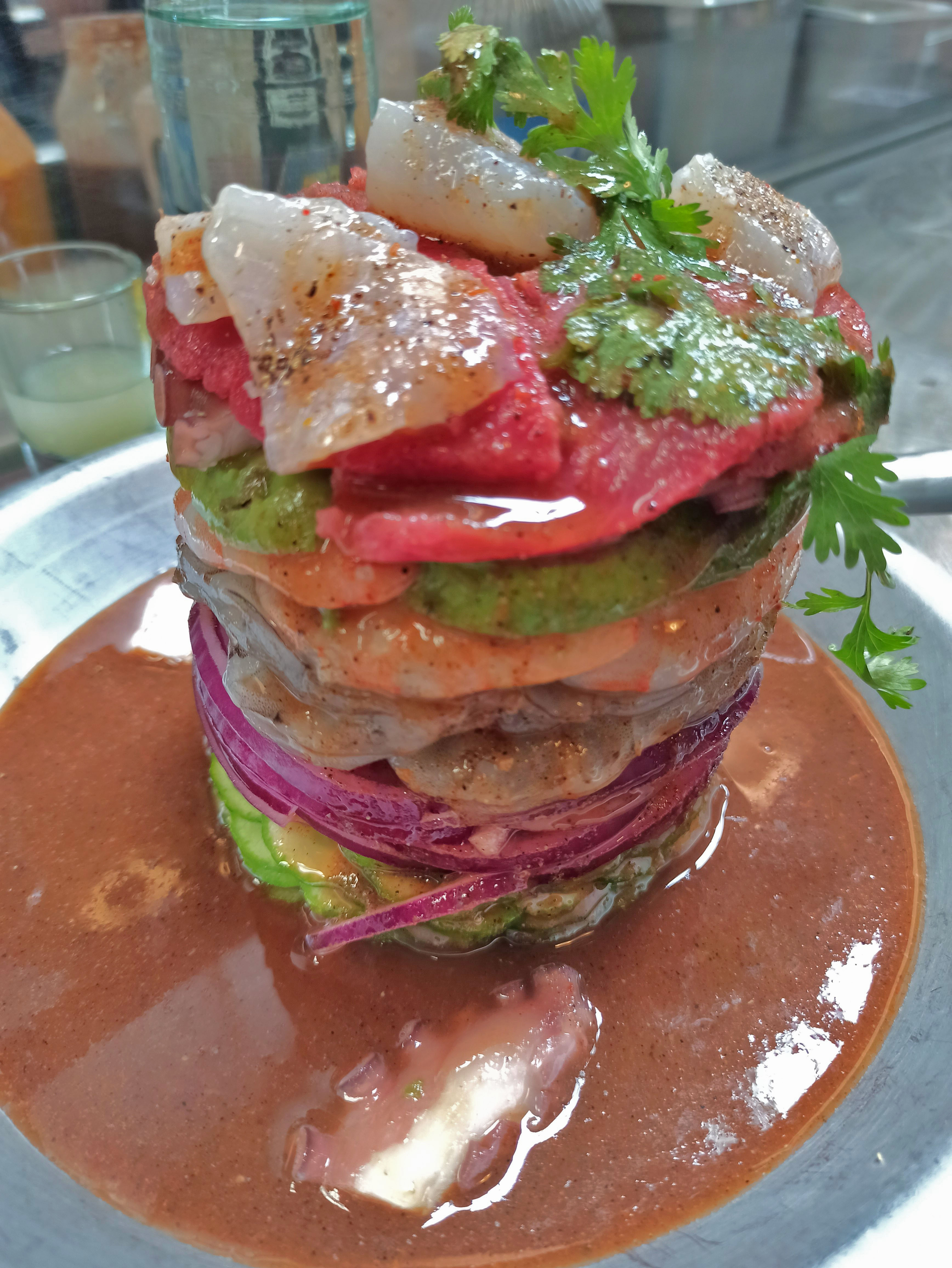
Basically, I was searching in Spanish for popular restaurants in Mexico City, and came across Mi Compa Chava (My Pal Chava), a popular spot in the foreigner-heavy Roma Norte section of town. (link in Spanish) It’s a seafood restaurant focusing on fresh catches from Sinaloa, the same state where the sake originated.
It’s also the home of that unbelievable tower (torre coincidentally means “tower” in Spanish) of seafood, as shown above and below…
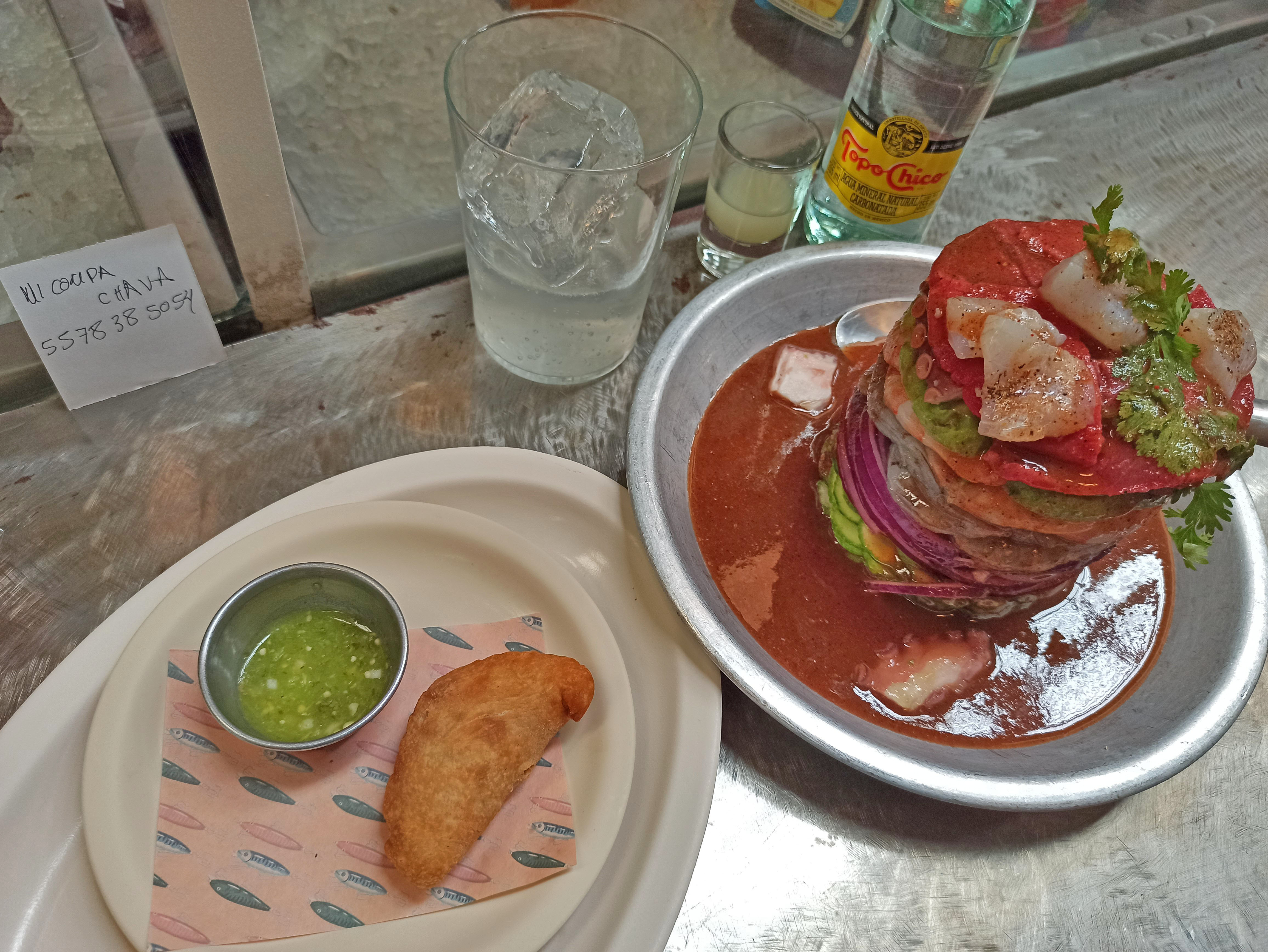
The edible skyscraper had layers of octopus, raw shrimp, cooked shrimp, cucumber, yellow fin tuna, red onion, avocado, and callo de hacha (scallops). Upon serving the tower, the waiter poured a blend of lime juice, charred tomatoes, Morita chilies, and a house salsa over it, returning the seafood back “to the sea.” Actually, that’s just my take on things.
The dish was a delight to conquer, and showed how fresh each ingredient could taste, in spite of being a couple of hours flight time from the Sinaloa port of Los Mochis (Mexico City is, after all the home of the largest seafood market in the country, and the Central de Abasto, the largest wholesale food market in the world).
What’s that you say? You want to see more of Mexican gastronomy to plan your visit?
I think that can be arranged.

Leave a Reply